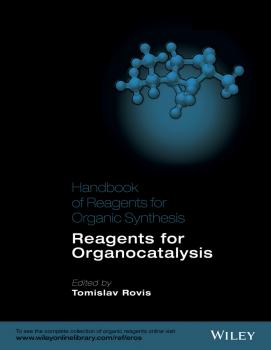ТОП просматриваемых книг сайта:
Tomislav Rovis
Список книг автора Tomislav RovisАннотация
From Boron Trifluoride to Zinc, the 52 most widely used reagents in organic synthesis are described in this unique desktop reference for every organic chemist. The list of reagents contains classics such as N-Bromosuccinimide (NBS) and Trifluoromethanesulfonic Acid side by side with recently developed ones like Pinacolborane and Tetra-n-propylammonium Perruthenate (TPAP). For each reagent, a concise article provides a brief description of all important reactions for which the reagent is being used, including yields and reaction conditions, an overview of the physical properties of the reagent, its storage conditions, safe handling, laboratory synthesis and purification methods. Advantages and disadvantages of the reagent compared to alternative synthesis methods are also discussed. Reagents have been hand-picked from among the 5000 reagents contained in EROS, the Encyclopedia of Reagents for Organic Synthesis. Every organic chemist should be familiar with these key reagents that can make almost every reaction work.
Аннотация
Spurred by the desire to make chemistry a sustainable and «greener» technology, the field of organocatalysis has grown to become one of the most important areas in synthetic organic chemistry. Organic catalysts can often replace potentially toxic metal catalysts and allow reactions to proceed under mild reaction conditions, thereby saving energy costs and rendering chemical processes inherently safer. More importantly perhaps, organocatalysis offers a complementary reactivity in many instances leading to increased versatility. This Handbook describes 126 key reagents for organocatalytic reactions and will be especially useful for professionals in the area of sustainable chemistry, medicinal research, as well as synthetic organic chemists working in academia and the pharmaceutical industry. All the information compiled in this volume is also available in electronic format on Wiley Online Library. The 126 reagents represented here are but a small fraction of the ca. 5,000 reagents available in the electronic Encyclopedia of Reagents for Organic Synthesis (e-EROS). e-EROS offers various search interfaces to locate reagents of interest, including chemical structure, substructure and reactions search modes. e-EROS is updated regularly with new and updated entries.


